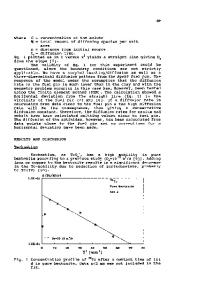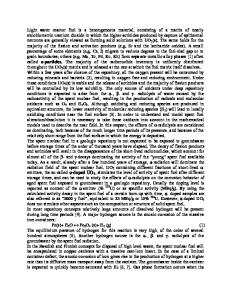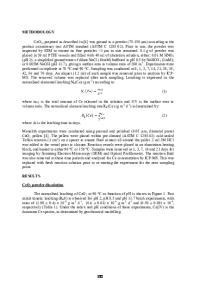Aqueous leaching of ADOPT and standard UO 2 spent nuclear fuel under H 2 atmosphere
- PDF / 1,222,576 Bytes
- 9 Pages / 432 x 648 pts Page_size
- 64 Downloads / 330 Views
MRS Advances © 2020 Materials Research Society DOI: 10.1557/adv.2020.69
Aqueous leaching of ADOPT and standard UO2 spent nuclear fuel under H2 atmosphere Alexandre Barreiro Fidalgo1, Olivia Roth1, Anders Puranen1, Lena Z. Evins2, Kastriot Spahiu2 1
Studsvik Nuclear AB, Nyköping, Sweden
2
The Swedish Nuclear Fuel Waste Management Company (SKB), Stockholm, Sweden
ABSTRACT
Leaching results to compare the dissolution behavior of a new type of fuel with additives (Advanced Doped Pellet Technology, ADOPT) with standard UO2 fuel are presented. Both fuels were irradiated in the same assembly of a commercial boiling water reactor to a local burnup of ~58 MWd/kgU. Fuel fragments are leached in simplified groundwater in two autoclaves under hydrogen atmosphere, representing conditions in a canister failure scenario resulting in water intrusion for a spent nuclear fuel repository. Preliminary results indicate the uranium concentration decreased to 3-4x10-8 M after 421 days, slightly above the solubility of amorphous UO2. Xe has been detected in the gas phase of both autoclaves. The concentration of Cs and I seems to gradually approach constant values, yet the redox sensitive elements continue to slowly increase with time. The preliminary data obtained supports the hypothesis that there is no major difference in leaching behavior between the two fuels.
INTRODUCTION: New types of fuel have been developed during the last decades to improve reactor performance, reduce the fuel cycle cost and reduce the consequences in case of fuel failure. One example is the ADOPT fuel (Advanced Doped Pellet Technology) which consists of a UO2-based fuel doped with small amounts of Cr 2O3 and Al2O3. One of the main characteristics of this fuel is the enlarged grain size which results in lower Fission Gas Release (FGR) and increased density [1]. From the safety perspective of a deep geological repository for spent nuclear fuel (SNF), new type of fuels must fulfill the acceptance criteria of low dissolution rate
Downloaded from https://www.cambridge.org/core. Gothenburg University Library, on 30 Jan 2020 at 08:52:25, subject to the Cambridge Core terms of use, available at https://www.cambridge.org/core/terms. https://doi.org/10.1557/adv.2020.69
under relevant repository conditions. Property changes as a consequence of minor modifications to the UO2 matrix might affect the leaching behavior of the fuel. For this reason, it is important to gather new data on the dissolution behavior of new types of fuel containing additives. In Roth et al. (2007) [2], the Instant Release Fraction (IRF) and matrix dissolution were investigated for both standard UO 2 and ADOPT fuels under aerated conditions. In another study, the oxidative dissolution of irradiated and unirradiated UO2 and ADOPT was compared [3]. The results show that the doping had little to no effect on the matrix dissolution, while some differences were observed in the release of elements with low solubility in UO2 such as Cs, Mo and Tc. In this study, the behavior of ADOPT fuel will be co
Data Loading...











